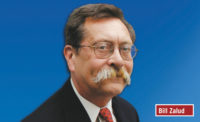Creating a Robust Communications System for the 9/11 Memorial
Security at the World Trade Center may be under fire after a few high-profile breaches, but security at the September 11 Memorial Museum is on high alert.

Security at the World Trade Center may be under fire after a few high-profile breaches, but security at the September 11 Memorial Museum is on high alert. The memorial has drawn 300,000 visitors since it opened in May.
A crucial component of responding to any type of security-related incident is the ability to dispatch people and provide current information and instructions to those in the field. Radio communications is the critical element that forms the link between detection and monitoring with an appropriate and timely response.
During the 9/11 attacks the communication system failed. For the Memorial Museum, architects Jacob Koshy and Ron Rochacher from Arup designed a security system comprised of video surveillance, intrusion detection, emergency intercom system and radio communications that provides coverage everywhere within the Museum, Plaza and Pavilion. The security system designed by Arup also ties into the Lower Manhattan Security Initiative launched by the New York Police Department.
What is involved with designing and implementing a radio system that supports security operations, both day-to-day duties and in response to an incident?
The design was primarily focused on the delivery of signals ubiquitously throughout the facility. This design aspect is important, as neither day-to-day operations nor emergencies are ever limited to where they can occur. Ensuring that there are the required minimum signal level strengths that will enable clear radio communications anywhere and at any time in the facility, required analysis of the propagation of RF signals within the facility and based on this, a determination of the most appropriate locations for antennas. In order to achieve this, antennas were carefully selected based on their propagation characteristics. Architectural constraints to mounting and the types of material on wall surfaces also impacted this selection.
What does the new security system entail in terms of video surveillance, intrusion detection, emergency intercom system and radio communications?
The new security systems utilize IP-based technologies, but doesn’t enter into the bleeding edge of technology. While it was important to have the benefits of modern systems, it was even more important to have reliable systems. It is always easy to fall into the trap of going with the new shiny technology, but it is wise to make sure the technology has been properly vetted and will be operational when you need it most. In addition, it was important to have a level of integration between the systems to allow for ease of operation, but not to do so to the extent that one system can place another system at risk of being compromised and malfunctioning.
How does the new radio system for the 9/11 Memorial Museum, Plaza and Pavilion meet the needs of first responders?
First responders require resilient, robust and dependable means of communications in an emergency, so the systems and infrastructure they rely upon to achieve this deserves particular attention to their critical needs. The new radio system implemented at the 9/11 Memorial and adjacent connected facilities was designed to serve the interconnected spaces throughout the underground canyon like environment, while meeting first responder coverage requirements. This gives first responders access to the innermost parts of the facility while still equipped with excellent two-way radio communications capabilities. The system is one of multiple similar but independent radio systems deployed at various other elements within the WTC site. Together, the systems all operate as a significant piece of communications infrastructure offering first responders clear two-way radio calls and the opportunity to coordinate their response across several first responder agencies.
What can enterprise security executives learn from this project for physical security in their enterprise?
To have a successful security design and installation, it is critical to get all security stakeholders in the same room and to establish requirements and goals early. It is important for those goals to relayed to other members of a design team so that all of the needed support services and integration can be vetted.
A project of this nature also is a prime example of needing to be flexible through the design be adaptable, since electronic security technologies progress and change on a frequent basis and devices considered state-of-the-art when the project starts can easily be discontinued and/or considered antiquated towards the end of construction. Finally, a relationship should be formed early on in the construction phase between the designers and the contractors to allow for the collaborative environment that was formed during design, to continue throughout construction.
Read moreSecurity Talk online at SecurityMagazine.com/columns/SecurityTalk
Looking for a reprint of this article?
From high-res PDFs to custom plaques, order your copy today!






